




Plastic items are notorious for easily getting scratched, whether it’s a phone screen, a pair of glasses, or a car bumper. However, there’s a simple and cost-effective solution for removing those unsightly scratches – toothpaste! Yes, you read that right. Toothpaste is not just for cleaning teeth, it can also work wonders on plastic surfaces.
Before you start rubbing toothpaste all over your scratched plastic items, it’s important to know the proper techniques to ensure successful results. Firstly, not all toothpastes are created equal for this purpose. It’s crucial to choose a toothpaste that doesn’t contain any abrasive substances like whitening agents or baking soda, as these can further damage the plastic surface.
Toothpaste with a fine grit and a gentle formula is ideal for removing scratches from plastic. Additionally, it’s recommended to use a toothpaste that has a creamy consistency rather than a gel formula. This will provide better coverage and allow for easier application.
When it comes to the actual process of removing scratches, start by cleaning the plastic surface with a soft cloth and mild soap. Once it’s dry, squeeze a small amount of toothpaste onto a clean, damp cloth or sponge. Gently rub the toothpaste onto the scratched area in a circular motion, applying light pressure.
Remember, patience is key when using toothpaste to remove scratches from plastic. Depending on the depth and severity of the scratches, it may take several rounds of gentle rubbing to achieve the desired results. Be mindful not to overdo it and cause further damage.
After you’ve thoroughly rubbed the toothpaste onto the scratched area, wipe away any excess toothpaste with a clean, damp cloth. Finally, use a dry cloth to buff the surface and reveal the repaired plastic. You’ll be amazed at how the scratches have diminished or completely disappeared!
So, instead of spending money on expensive scratch removal products or replacing your scratched plastic items, give toothpaste a try. It’s a budget-friendly and effective solution for restoring the appearance of your favorite possessions.
Understanding the Problem
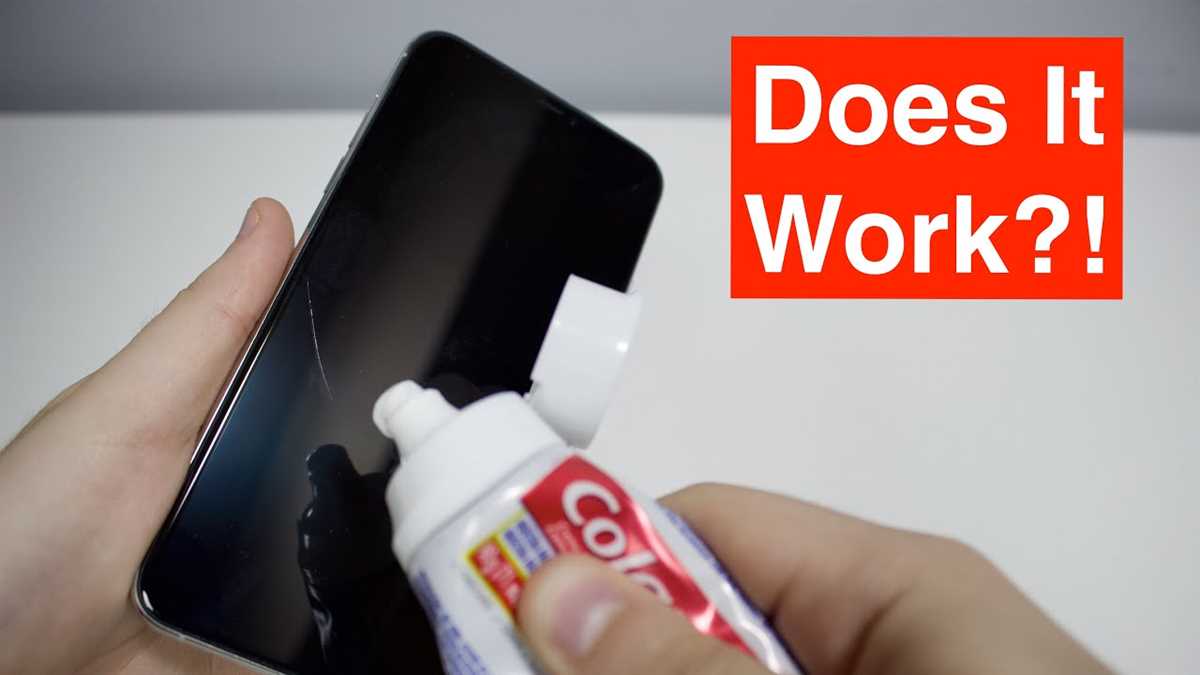
Before delving into the techniques and steps to remove scratches from plastic with toothpaste, it is important to understand the nature of the problem. Scratches on plastic surfaces can be quite unsightly and can affect the overall appearance of an object. Whether it is a mobile phone screen, a pair of sunglasses, or a plastic car bumper, scratches can be a common annoyance.
Plastic is a relatively soft material, which makes it prone to scratching. Everyday objects and contact with rough surfaces can cause these scratches to appear. While some scratches may be shallow and barely noticeable, others can be deep and more prominent.
It is important to note that toothpaste is not a magical solution that will completely remove deep scratches. It is, however, an effective method for reducing the appearance of minor scratches and improving the overall look of the plastic surface.
By understanding the problem and what toothpaste can realistically achieve, you can set realistic expectations and decide if this method is suitable for your specific situation. If you have deep or extensive scratches, it may be necessary to explore other options such as professional repair or replacement.
Choosing the Right Toothpaste
When it comes to removing scratches from plastic using toothpaste, not all toothpastes are created equal. It is important to choose the right toothpaste for the job in order to achieve the best results. Here are some factors to consider when selecting a toothpaste for scratch removal:
1. Toothpaste with Baking Soda
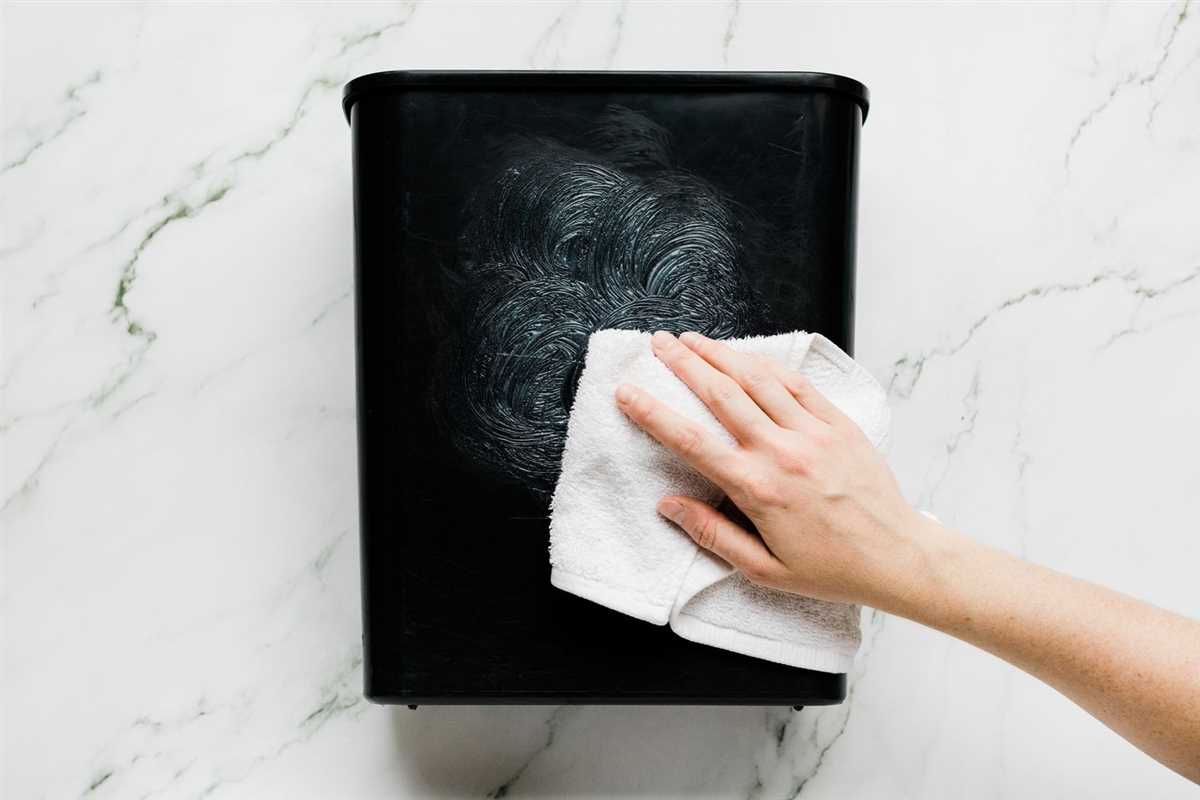
Toothpaste that contains baking soda is often recommended for removing scratches from plastic surfaces. Baking soda has mild abrasive properties that can help gently polish the plastic and reduce the appearance of scratches. Look for toothpastes that explicitly mention baking soda as an ingredient.
2. Whitening Toothpaste
Whitening toothpaste, which typically contains gentle abrasives, may also be effective in removing light scratches from plastic. These toothpastes are specifically formulated to remove surface stains and discoloration, which can help minimize the visibility of minor scratches.
3. Avoid Toothpaste with Gel or Gel Strips
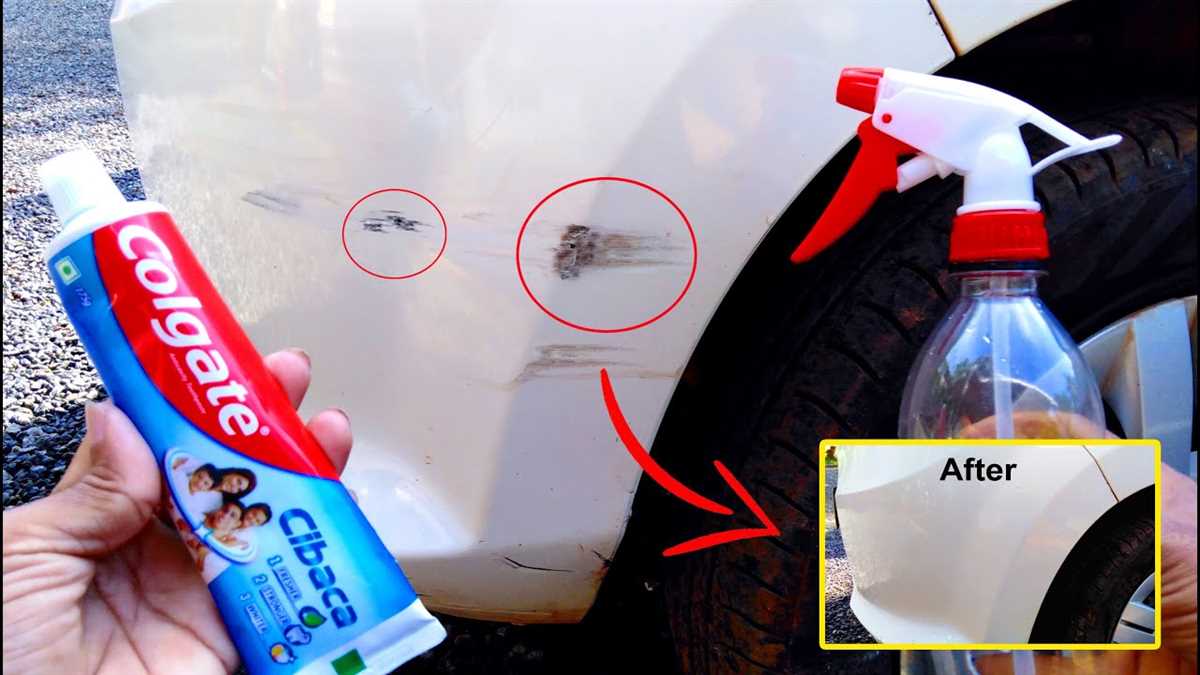
Toothpastes that are marketed as gels or contain gel strips may not be suitable for scratch removal. Gels typically have a smooth texture and lack the abrasive properties needed to effectively polish plastic surfaces. It’s best to opt for a traditional toothpaste with a paste-like consistency for scratch removal purposes.
4. Non-Gel Toothpaste with Mild Abrasives
Look for toothpaste that contains mild abrasives, such as calcium carbonate or hydrated silica. These toothpastes can help gently buff out scratches without causing further damage to the plastic. Avoid toothpaste with high levels of abrasiveness, as they may be too harsh and potentially damage the plastic surface.
5. Avoid Toothpaste with Added Whitening Agents
While whitening toothpaste can be effective in reducing the appearance of scratches, toothpaste that contains additional whitening agents like hydrogen peroxide or carbamide peroxide may be too harsh for plastic surfaces. These ingredients are designed for teeth whitening and may cause damage to the plastic, so it’s best to stick to toothpastes without these additives.
Remember to carefully read the packaging and ingredients list of toothpaste before using it to remove scratches from plastic. It’s always a good idea to test a small, inconspicuous area first to ensure that the toothpaste does not cause any adverse effects on the plastic surface.
Applying Toothpaste to the Scratched Plastic
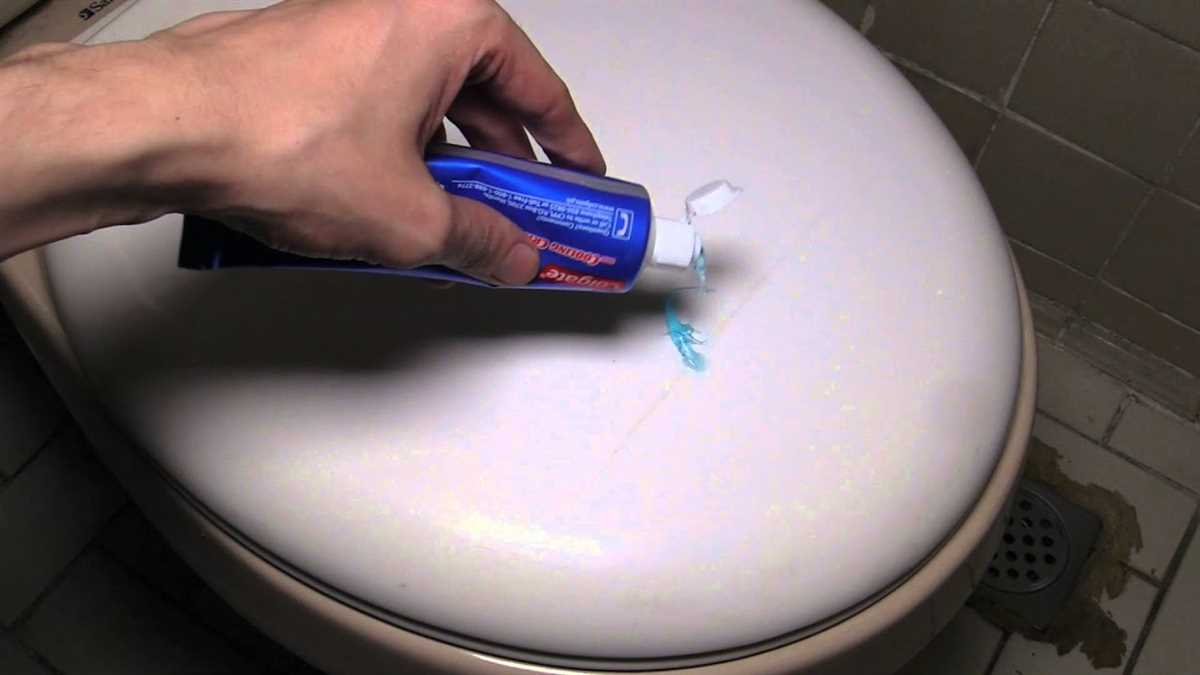
Step 1: Gather necessary materials
Before you begin, make sure you have all the necessary materials:
- Toothpaste (preferably non-gel)
- Clean microfiber cloth or sponge
- Water
Step 2: Clean the surface
Start by cleaning the scratched plastic surface with warm water and a mild soap. Use the cloth or sponge to gently scrub away any dirt or debris. Rinse thoroughly and pat dry with a clean cloth.
Step 3: Apply the toothpaste
Squeeze a small amount of toothpaste onto your fingertip or directly onto the scratched area. Make sure the toothpaste covers the entire scratch.
Step 4: Rub the toothpaste in
Using a circular motion, gently rub the toothpaste into the scratched plastic. Apply slight pressure but be careful not to damage the surface further. Continue rubbing for about 2-3 minutes or until you see an improvement.
Step 5: Wipe off the excess
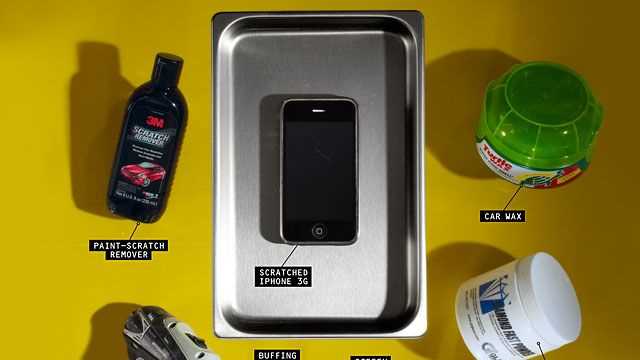
Take a clean cloth or sponge and dampen it with water. Use this to wipe off the excess toothpaste from the surface. Make sure to remove all the toothpaste residue.
Step 6: Inspect the results
Take a close look at the plastic surface and check if the scratches have improved. If necessary, you can repeat the process for deeper scratches. Keep in mind that toothpaste may not be able to completely remove all scratches, but it can significantly reduce their visibility.
Step 7: Final cleaning
Once you are satisfied with the results, clean the surface again with warm water and a mild soap to remove any remaining toothpaste residue. Rinse well and dry with a clean cloth.
Note:
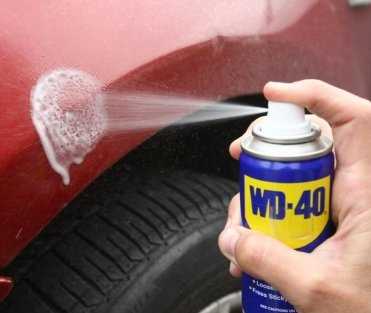
If your plastic surface has a coating or is sensitive to abrasives, it is recommended to test the toothpaste on a small, inconspicuous area first before applying it to the scratched area. This will help ensure that the toothpaste does not damage or cause any unwanted effects on the plastic surface.
Polishing and Finishing
After successfully removing the scratches using toothpaste, it is important to properly polish and finish the plastic surface to ensure a smooth and shiny result. Here are some steps to follow:
- Clean the surface: Use a clean cloth or microfiber towel to wipe away any remaining toothpaste residue. Make sure the surface is free from dust, dirt, or any other contaminants.
- Apply a plastic polish: There are specific plastic polishes available in the market that can be used to provide a professional finish. Apply a small amount of the polish onto a soft cloth and gently rub it onto the scratched area in circular motions. Make sure to follow the manufacturer’s instructions for the specific polish being used.
- Buff the surface: After applying the plastic polish, use a clean portion of the cloth to buff the surface. Apply light pressure and continue buffing until the surface appears shiny and smooth.
- Inspect the result: Take a close look at the surface to ensure that all scratches have been effectively removed. If any scratches remain, repeat the process using toothpaste or a plastic polish until the desired result is achieved.
Remember, the effectiveness of the polishing and finishing process may depend on the severity and depth of the scratches as well as the quality of the plastic surface. It is always recommended to test a small, inconspicuous area first before proceeding with the entire surface.
By following these steps, you should be able to achieve a polished and finished plastic surface free from scratches. It is important to maintain the surface properly to prevent future scratches and damage. Regular cleaning and gentle handling will help to keep the plastic surface looking its best for a longer period of time.
FAQ
Can toothpaste really remove scratches from plastic?
Yes, toothpaste can help remove scratches from plastic. The abrasive nature of toothpaste can gently polish the surface of the plastic and minimize the appearance of scratches.
What type of toothpaste should I use?
It is recommended to use non-gel toothpaste that contains baking soda for best results. Gel toothpaste may not have the same abrasive properties necessary to effectively remove scratches.
How should I apply toothpaste to the plastic?
First, clean the plastic surface thoroughly to remove any dirt or debris. Then, apply a small amount of toothpaste directly onto the scratched area. Gently rub the toothpaste in a circular motion with a soft, clean cloth.
Will toothpaste remove deep scratches?
Toothpaste is most effective in removing light or surface scratches. It may not be able to completely remove deep scratches, but it can help minimize their appearance. If the scratches are very deep or severe, it may be necessary to seek professional help or consider replacing the plastic.
Can I use toothpaste to remove scratches from all types of plastic?
Toothpaste can be used on many types of plastic, including acrylic and polycarbonate. However, it is important to test a small, inconspicuous area first to ensure that the toothpaste does not cause any damage or discoloration. Some types of plastic may be more sensitive and may require alternative methods or products.











